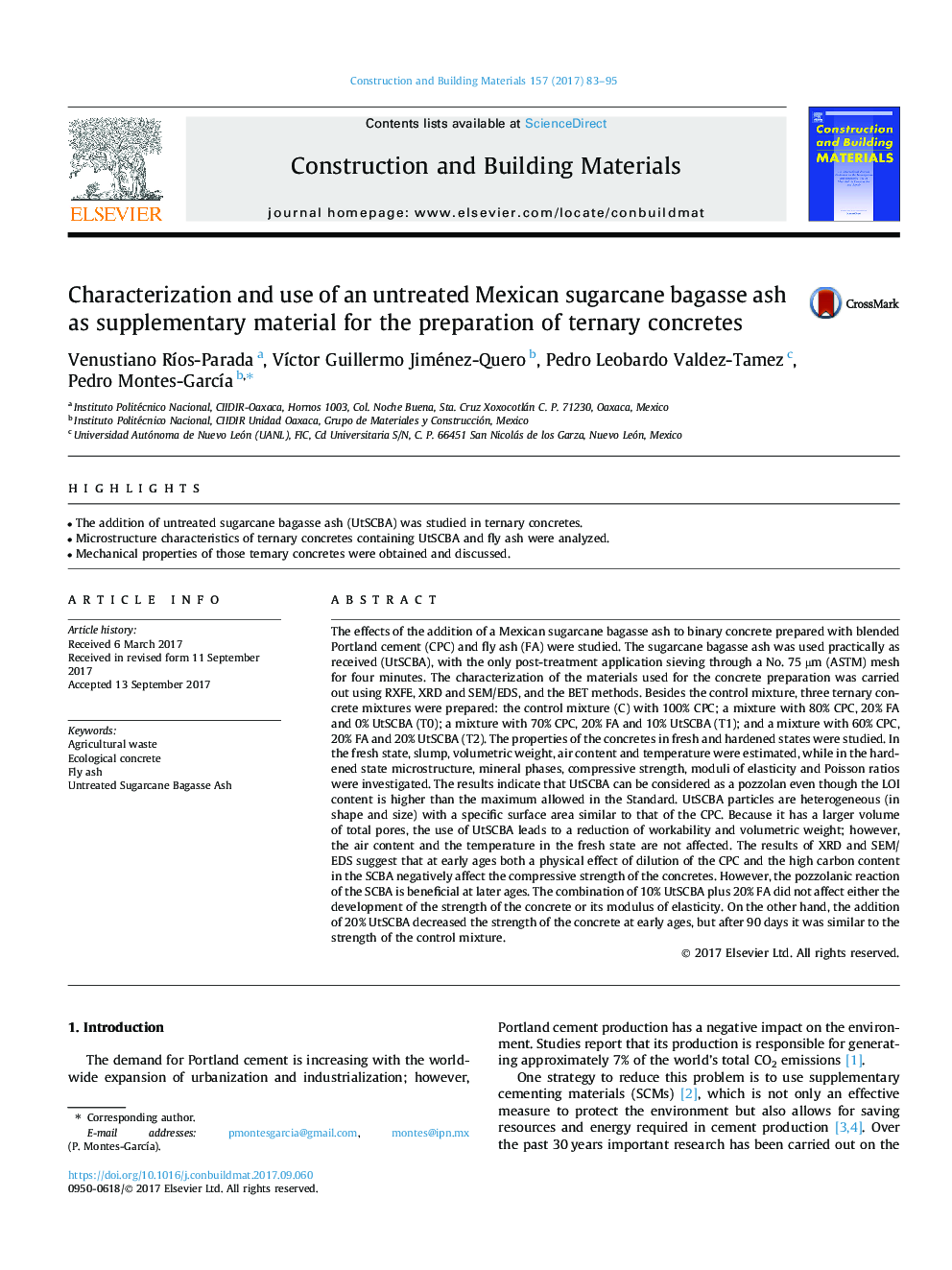| کد مقاله | کد نشریه | سال انتشار | مقاله انگلیسی | نسخه تمام متن |
|---|---|---|---|---|
| 4912855 | 1428749 | 2017 | 13 صفحه PDF | دانلود رایگان |
عنوان انگلیسی مقاله ISI
Characterization and use of an untreated Mexican sugarcane bagasse ash as supplementary material for the preparation of ternary concretes
ترجمه فارسی عنوان
شناسایی و استفاده از خاکستر بوته ای نیشکر مکزیکی به عنوان مواد تکمیلی برای تهیه بتن های تره فرنگی
دانلود مقاله + سفارش ترجمه
دانلود مقاله ISI انگلیسی
رایگان برای ایرانیان
کلمات کلیدی
زباله های کشاورزی، بتن اکولوژیکی، خاکستر پرواز خاکستر نارگیل زغال اخته،
موضوعات مرتبط
مهندسی و علوم پایه
سایر رشته های مهندسی
مهندسی عمران و سازه
چکیده انگلیسی
The effects of the addition of a Mexican sugarcane bagasse ash to binary concrete prepared with blended Portland cement (CPC) and fly ash (FA) were studied. The sugarcane bagasse ash was used practically as received (UtSCBA), with the only post-treatment application sieving through a No. 75 µm (ASTM) mesh for four minutes. The characterization of the materials used for the concrete preparation was carried out using RXFE, XRD and SEM/EDS, and the BET methods. Besides the control mixture, three ternary concrete mixtures were prepared: the control mixture (C) with 100% CPC; a mixture with 80% CPC, 20% FA and 0% UtSCBA (T0); a mixture with 70% CPC, 20% FA and 10% UtSCBA (T1); and a mixture with 60% CPC, 20% FA and 20% UtSCBA (T2). The properties of the concretes in fresh and hardened states were studied. In the fresh state, slump, volumetric weight, air content and temperature were estimated, while in the hardened state microstructure, mineral phases, compressive strength, moduli of elasticity and Poisson ratios were investigated. The results indicate that UtSCBA can be considered as a pozzolan even though the LOI content is higher than the maximum allowed in the Standard. UtSCBA particles are heterogeneous (in shape and size) with a specific surface area similar to that of the CPC. Because it has a larger volume of total pores, the use of UtSCBA leads to a reduction of workability and volumetric weight; however, the air content and the temperature in the fresh state are not affected. The results of XRD and SEM/EDS suggest that at early ages both a physical effect of dilution of the CPC and the high carbon content in the SCBA negatively affect the compressive strength of the concretes. However, the pozzolanic reaction of the SCBA is beneficial at later ages. The combination of 10% UtSCBA plus 20% FA did not affect either the development of the strength of the concrete or its modulus of elasticity. On the other hand, the addition of 20% UtSCBA decreased the strength of the concrete at early ages, but after 90 days it was similar to the strength of the control mixture.
ناشر
Database: Elsevier - ScienceDirect (ساینس دایرکت)
Journal: Construction and Building Materials - Volume 157, 30 December 2017, Pages 83-95
Journal: Construction and Building Materials - Volume 157, 30 December 2017, Pages 83-95
نویسندگان
Venustiano RÃos-Parada, VÃctor Guillermo Jiménez-Quero, Pedro Leobardo Valdez-Tamez, Pedro Montes-GarcÃa,
